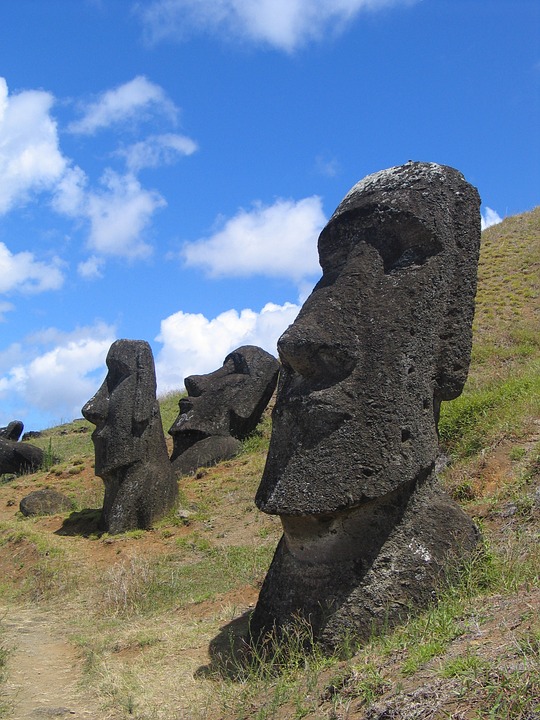The Easter Island Rocks – A Brief History, the Moai were carved from the solidified ash of the Rano Raraku volcano. Each of them weighs about 20 tons and is at least 20 feet tall. One of the statues, which is unfinished, is estimated to be 270 tons and 69 feet tall. The question is why was this one not moved? Was it possibly because it was just too big to move? Nobody has the answer to this question.
Many of these heads had red stone crowns (pukau) put on their heads, which were carved from the stone found in a quarry known as Puna Pau. It seems as though having this red crown represented status in Polynesia. In the cavities where their eyes were, it was red and coral in color. All the rocks were placed facing inland to be able to overlook their ceremonial area.
The first rocks to be carved were small, with their arms across their chests, round heads, and had large eye-sockets. These are almost identical to those found on the Polynesian Islands and Pitcairn. Over time, the statues got larger and by the end, they were very slender and tall. Each one that was ordered by a chief would be larger than the last one made. This showed status and power, so the bigger it was, the more power the chief had.
Getting these giants to their final resting place must have been a staggering task. They were lowered with ropes down to where they had to be completed, which is why there are round holes at the rim of each volcano. Each hole is about two feet wide and five feet deep. Each statue had to be lowered down a 45 degree angled slope. The ropes are said to have been about 600 feet long and a minimum of 3 inches thick to be able to lower the heads down the slope.
Hauling ropes were also used to move the statues to the platforms, and are estimated to have been 250 feet long. Each of these ropes must have weighed about a ton and would have taken many people to pull the rocks to their destination.
With this amount of work to get them where they needed to be, you can see why the Easter Island Rocks are so amazing, and why millions flock to see these truly magnificent buried giants every year.













